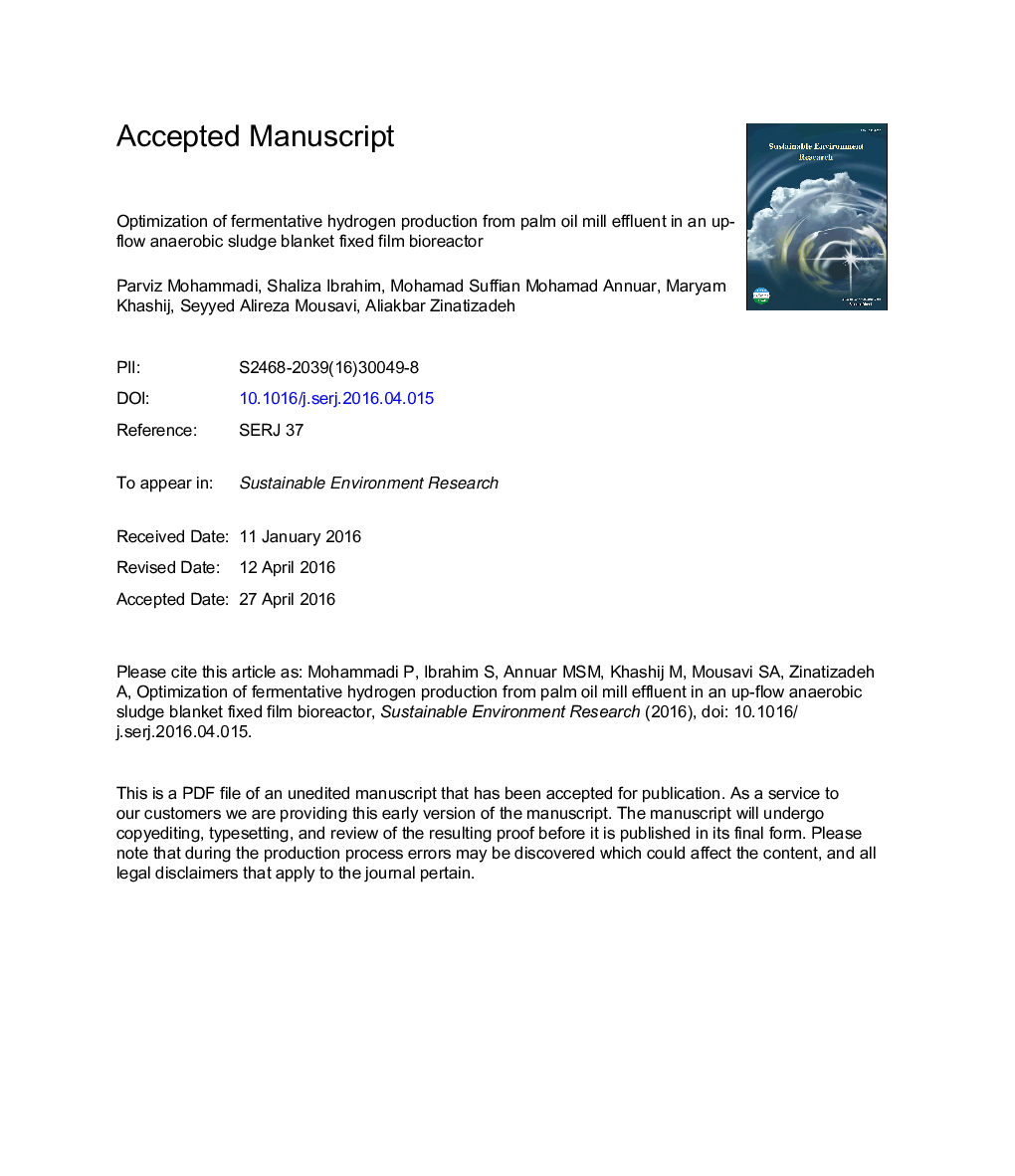| Article ID | Journal | Published Year | Pages | File Type |
|---|---|---|---|---|
| 8862956 | Sustainable Environment Research | 2017 | 26 Pages |
Abstract
Response surface methodology with a central composite design was applied to optimize fermentative hydrogen production from palm oil mill effluent (POME) in an upflow anaerobic sludge blanket fixed film reactor. In this study, the concurrent effects of up-flow velocity (Vup) and feed flow rate (QF) as independent operating variables on biological hydrogen production were investigated. A broad range of organic loading rate between 10 and 60 g COD Lâ1 dâ1 was used as the operating variables. The dependent parameters as multiple responses were evaluated. Experimental results showed the highest value of yield at 0.31 L H2 gâ1 COD was obtained at Vup and QF of 0.5 m hâ1 and 1.7 L dâ1, respectively. The optimum conditions for the fermentative hydrogen production using pre-settled POME were QF = 2.0-3.7 L dâ1 and Vup = 1.5-2.3 m hâ1. The experimental results agreed very well with the model prediction.
Related Topics
Life Sciences
Environmental Science
Environmental Engineering
Authors
Parviz Mohammadi, Shaliza Ibrahim, Mohamad Suffian Mohamad Annuar, Maryam Khashij, Seyyed Alireza Mousavi, Aliakbar Zinatizadeh,
